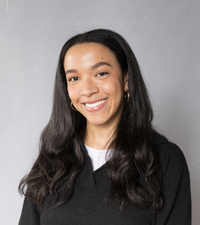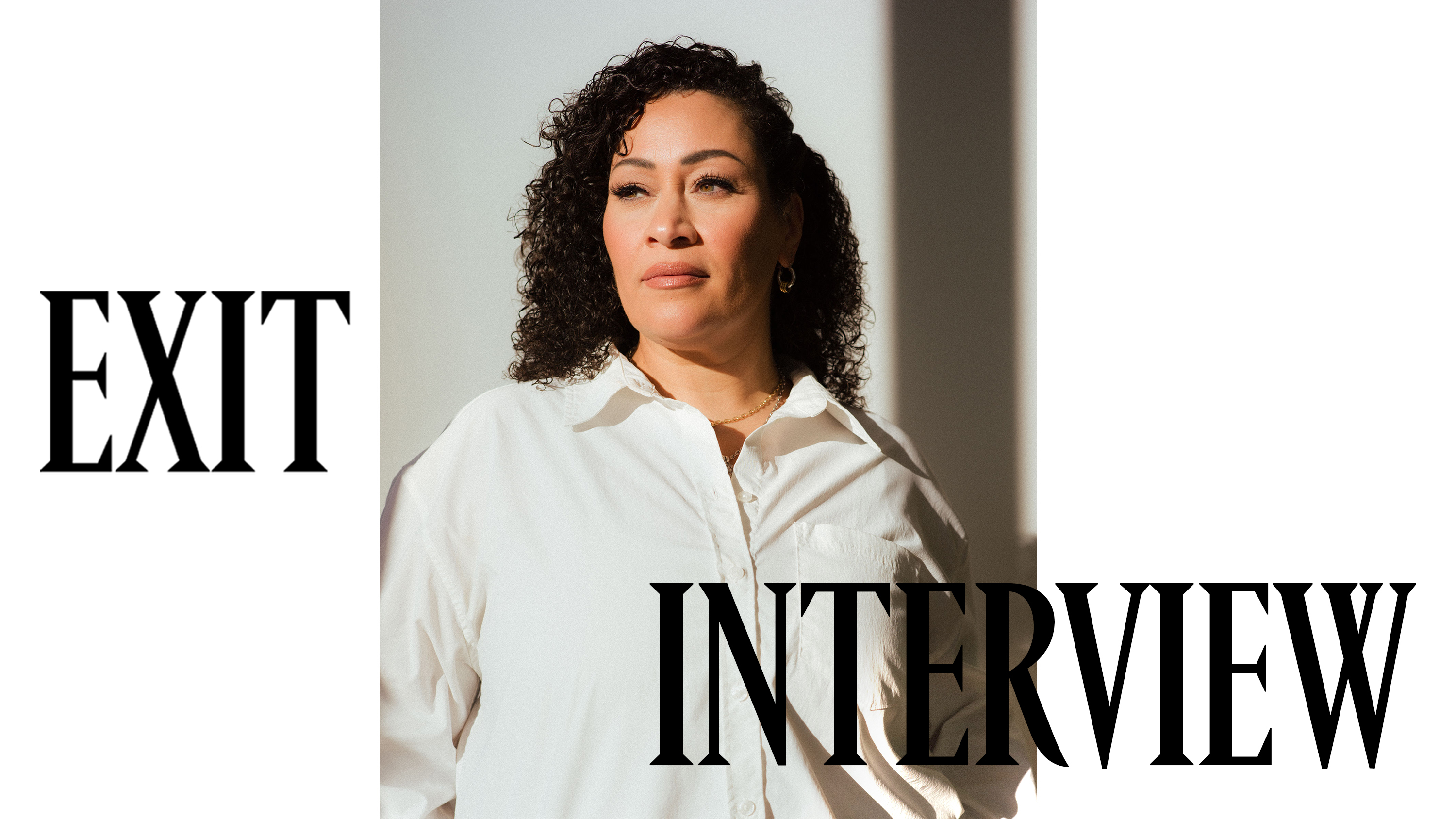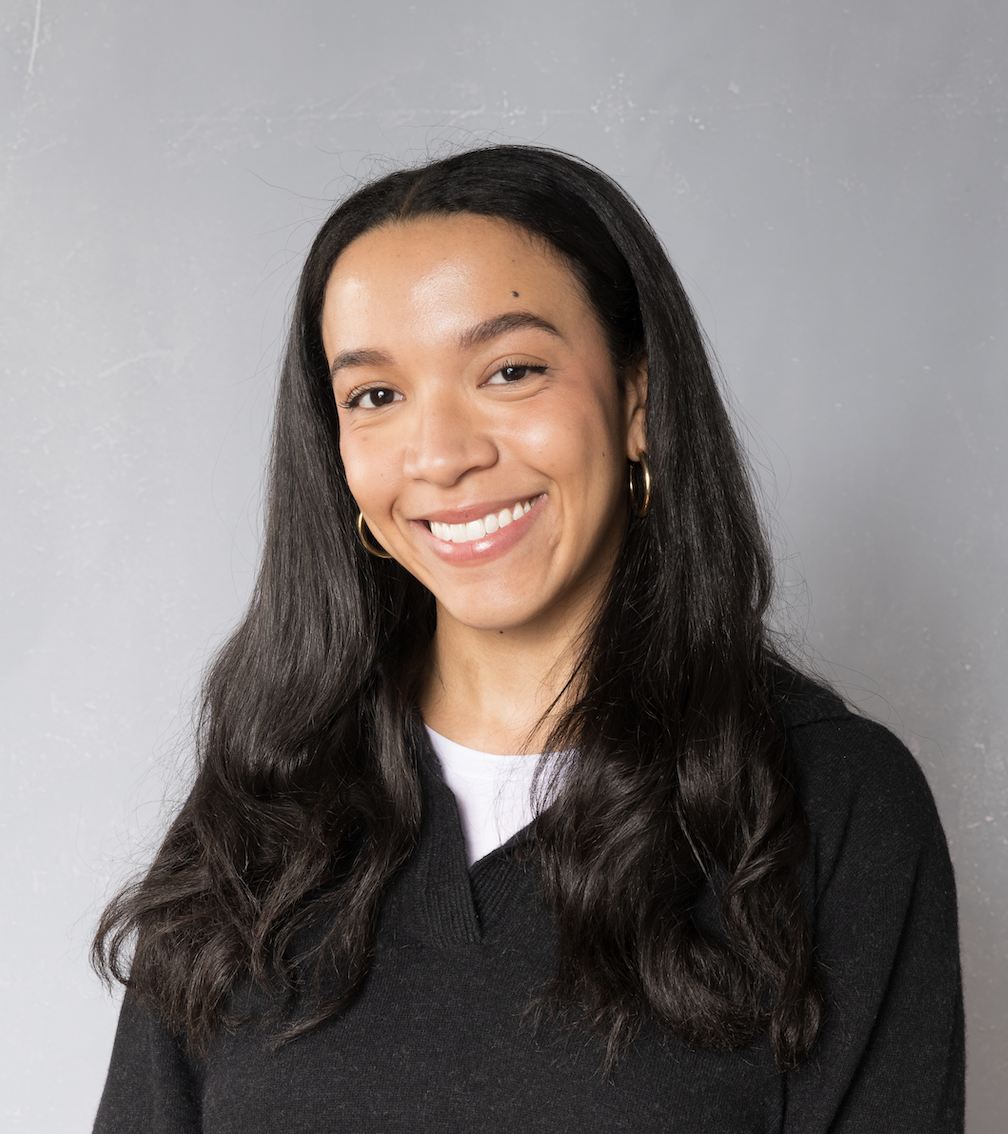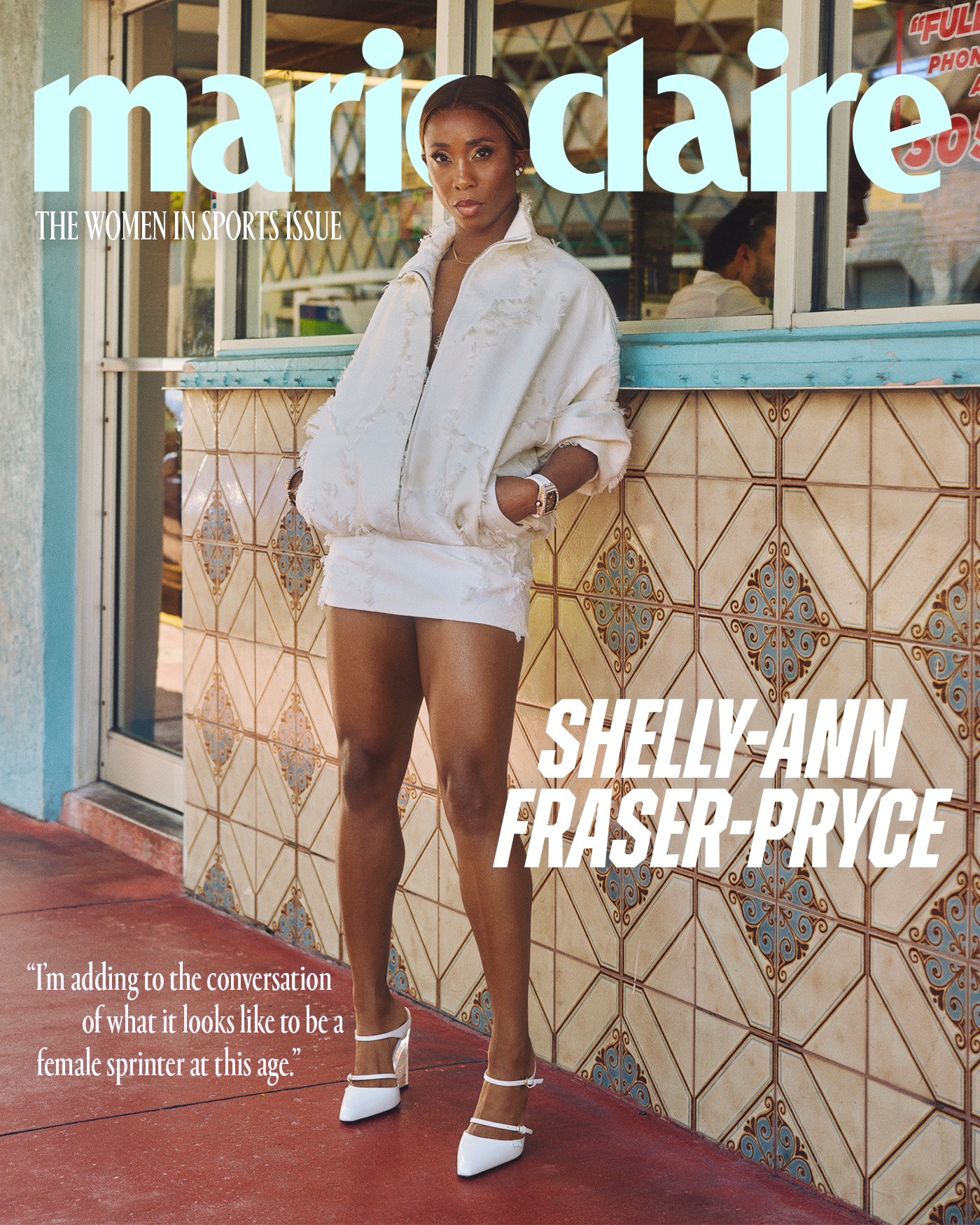How Tania Flynn Walked Away From a 20-Year Career With Nike to Build a New Legacy at Athleta—While Pregnant
"It felt like I was stepping into two new chapters at once—one in my professional life and another in my personal life."


In Exit Interview, Marie Claire has a candid conversation with someone who has left their job. We learn all about their experience—both the good and bad—plus why they decided to leave and what life looks like on the other side. This time, we talk to Tania Flynn, who spent nearly two decades rising through Nike’s design ranks before joining Athleta as head of design. Almost a year into the new role, Flynn finds herself writing a new career playbook that involves a more hands-on approach to designing sportswear around real women’s lives.
When did you know it was time to move on from Nike?
I look back on that time fondly. It shaped who I am as a creative, a designer, and a leader. But after that long in one place, you naturally start to wonder: What’s next? I became more curious about where I was heading than what I left behind.
When I stepped into my first leadership role at Nike as a design director for the brand’s youth apparel team, I had a chance to help young girls build their confidence through clothing. The stats show a lack of body confidence as a major factor discouraging developing girls from participating in sports. I realized that my work could actually help to change that.
Then I became the label’s VP of Apparel Design, where I worked more broadly across styles, overseeing product design for women’s, men’s, kids', and accessories categories. Because of the scale of my role, I was more focused on leading large teams and overseeing a broad vision for global product lines. While I had influence over product direction, a lot of the day-to-day creative decisions were managed by others.
So when Athleta offered me the chance to reconnect with my passion for helping women and girls unlock their potential—while being more involved in design choices—I knew it was the right move for me.
At the time, I was also pregnant with my little girl, Lucy. And when I thought about the world I could help create for our future generation of young women, this new role felt like the perfect place to do that.
Get exclusive access to fashion and beauty trends, hot-off-the-press celebrity news, and more.
By bringing my full self to work—as a woman, a person of color, a mother, and a wife—I’m modeling a multifaceted identity in leadership and encouraging others to do the same.
What did it feel like to make such a big career shift while you were pregnant with your daughter?
Leaving Nike while pregnant was both exhilarating and overwhelming. It felt like I was stepping into two new chapters at once—one in my professional life and another in my personal life. There were definitely moments of self-doubt, as there often are when you’re navigating major life changes. But I maintained my confidence by focusing on the lessons I gained from the transition. For one, I learned how to manage my time and energy more effectively, both of which become increasingly limited during pregnancy. I also developed a stronger sense of patience, with myself and with others.
What was the most emotional part about the move from Nike to Athleta, and what unexpected challenges came from the transition?
I was emotional about walking away from the legacy that I had built at Nike. I created lifelong friendships with coworkers, contributed to designs that became cultural icons, and experienced the evolution of sport and style on a global scale.
Leaving such a familiar world felt extremely daunting and I surely didn’t anticipate the adjustment period that followed my departure. Adapting to new processes and unfamiliar people required patience. I had to recalibrate how I led teams and communicated my ideas, but in those moments I was reminded that meaningful growth rarely happens inside our comfort zones.
Are there any personal experiences that influenced your decision to move to Athleta?
Athleta’s commitment to empowering women resonates deeply with my own story. Similar to a lot of other girls, I struggled with my self-esteem while going through puberty. I got my period when I was 11 years old and I had boobs in the fourth grade. I had an ill-fitting bra that I layered underneath my school uniform, and I wore two of them to do any physical activity. Developing early—and ahead of my peers—was a really emotional experience. I can think of so many embarrassing moments—not only as a child, but also as an adult—that could have been avoided if a sportswear designer had considered my not-so-unique set of pain points.
Now, I’m in a position at Athleta where I can be that conscious-driven designer. That’s what keeps me fired up every day.
If you find fear along the path toward your purpose, that’s actually a good sign; those uneasy moments are where the biggest growth happens.
What was the toughest piece of criticism you received in your previous role, and how did it help you to become a better leader?
Someone once told me I’m too direct in my communication style. I took that to heart and began studying leaders who deliver honest feedback with both clarity and respect. Their example showed me how to stay candid yet considerate, and that’s the standard I work towards.
I want my teams—past and present—to see what authentic, courageous leadership looks like. By bringing my full self to work—as a woman, a person of color, a mother, and a wife—I’m modeling a multifaceted identity in leadership and encouraging others to do the same.
Which lessons from your previous work experience are guiding you now?
Early in my career, I took several roles that—on paper—didn’t match the long-term vision I had for myself. One example was moving into a position leading Nike's kids' business, which felt like a sharp departure from the work I had done—and candidly, not as exciting.
At the time, I was frustrated, but with distance, each detour stretched my skill set and widened my network. That experience ended up unlocking a new sense of purpose. It taught me the importance of showing up where I’m needed most, even if it doesn't fit my original "plan.” Rather than resist the change, I chose to lean in. I viewed those pivots as opportunities to stretch and grow. Each of those roles added dimension to my career and prepared me to be a better steward of the business.
At Nike, I also discovered how a strong narrative can give every seam and zipper a reason to exist. That insight forced me to listen harder to the athlete, not just what she does, but how she feels. Empathy became foundational. My team and I map the emotional context of a woman’s life—whether she’s moving from teen to adult or juggling a new baby and a marathon plan. We ask, What motivates her? What challenges her? And then design with that awareness.
Getting dressed is an emotional decision; what we put on our bodies is an extension of identity. So every product has to work twice: perform technically and serve as a tool for self-expression.
In hindsight, the sum of all those winding choices—and the narrative focus I honed at Nike—brought me exactly where I’m supposed to be.
I had to look inward for the strength to navigate tough stretches and trust that my skills and experiences would carry me forward.
For anyone eyeing a career pivot but paralyzed by “what-ifs,” how would you help them reframe that fear?
Making a career pivot is rarely easy—in fact, it’s usually uncomfortable. But if you find fear along the path toward your purpose, that’s actually a good sign; those uneasy moments are where the biggest growth happens.
Transitioning from Nike to Athleta felt intimidating. Not only was I pregnant, but I had to navigate an entirely new environment and its dynamics. However, taking that leap was one of the best decisions I’ve ever made. I had to look inward for the strength to navigate tough stretches and trust that my skills and experiences would carry me forward.
I also leaned hard on my trusted tribe—mentors, close friends, and especially my family. Spending time with them always re-centers me—drawing superheroes with my seven-year-old, playing peekaboo with my eight-month-old, or debriefing the day with my husband. Stepping away from my desk and connecting with my people brings me peace, recharges my energy, and reminds me that I’m never tackling a pivot alone.

Lauren K. Tappan is the Fashion Editor at Marie Claire, where she covers trend forecasting and shopping stories, highlighting runway-inspired styles and a blend of emerging and established brands. Prior to joining Marie Claire, she worked as a freelance editor for Harper’s Bazaar and ELLE, specializing in e-commerce content and curating seasonal trend reports. Earlier in her career, she worked at Town & Country, developing a strong portfolio of fashion roundups and designer profiles.
Lauren holds a bachelor's degree in communications with a minor in journalism from the University of Pennsylvania. While at Penn, she served as editor-in-chief of The Walk, the university's fashion magazine, and completed internships at Philadelphia Style Magazine and EveryStylishGirl.
